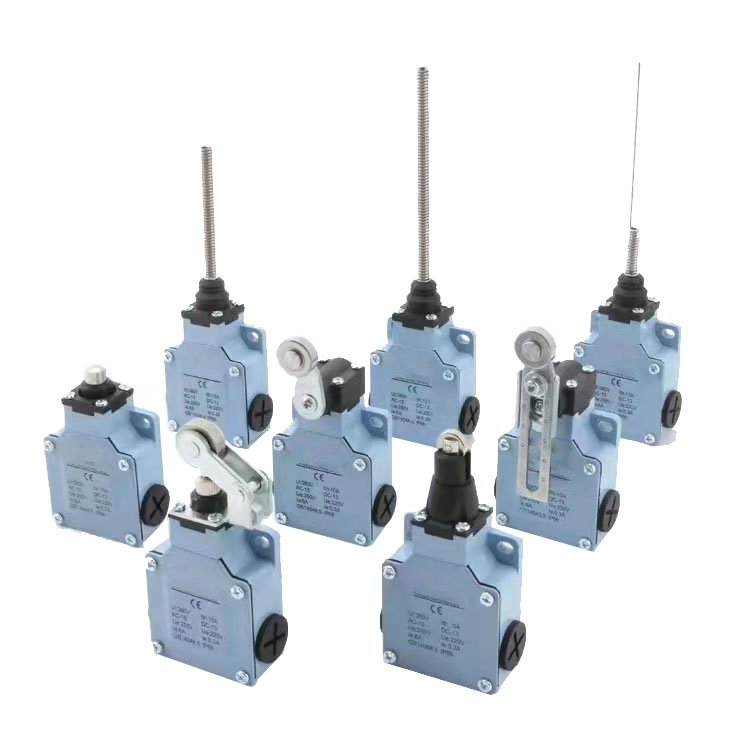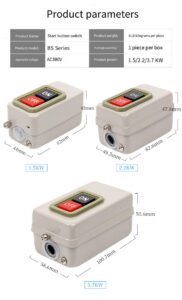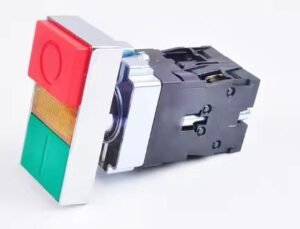
Introduction:
Discover how travel switches ensure machine safety and precision. Learn types, installation, and maintenance for industrial applications.
Travel switches, also known as limit switches, are vital components in industrial machinery, enabling precise motion control and safety protection. These devices detect the presence, position, or movement of objects, triggering electrical signals to stop, start, or adjust machine operations. By integrating travel switches into automated systems, manufacturers can enhance productivity, minimize downtime, and safeguard equipment and personnel. This article explores the core functionalities, key types, and best practices for leveraging travel switches effectively.
Understanding Travel Switches: How They Work
Travel switches operate through mechanical activation. A movable actuator—such as a lever, roller, or plunger—comes into contact with a moving part of the machine. When the actuator is displaced, it activates internal electrical contacts, either opening or closing a circuit. This signal communicates with the control system to initiate predefined actions, such as halting a conveyor belt when a workpiece reaches a designated position or triggering an alarm when a safety guard is opened.
Their robust design makes travel switches suitable for harsh environments, with models rated for high temperatures, dust, and moisture. Properly configured travel switches ensure machines operate within safe parameters, preventing collisions, overloads, or misalignments that could lead to costly damage or accidents.

Key Types of Travel Switches for Diverse Applications
- Mechanical Travel Switches:
These are the most common type, relying on direct physical contact to activate the actuator. They offer simple, reliable operation for basic motion detection in conveyors, lifts, and assembly lines. - Roller Lever Switches:
Featuring a roller at the end of a lever, these switches handle high-impact applications, such as heavy machinery or automated guided vehicles (AGVs). The roller design reduces wear and tear from repeated collisions. - Proximity Travel Switches:
Using electromagnetic or inductive sensors, these non-contact switches detect metal objects without physical contact, ideal for high-speed or precision applications where mechanical wear is a concern. - Spring Return Switches:
Equipped with a built-in spring, these switches automatically reset to their original position after the actuator is released, ensuring continuous cycle control in repetitive motions like stamping or packaging machines.
Critical Installation Best Practices
Correct installation is essential for travel switch performance:
- Positioning: Mount switches securely near the target motion path, ensuring the actuator aligns precisely with the moving component. Use brackets or mounting plates to prevent vibration-induced misalignment.
- Wiring: Follow electrical schematics to connect power, load, and control signals correctly. Use shielded cables in high-noise environments to avoid signal interference.
- Adjustment: Calibrate the switch to trigger at the exact desired position. Test manually to confirm proper activation and deactivation, fine-tuning the actuator angle or pressure as needed.
Neglecting installation details can lead to delayed responses, false triggers, or complete system failures, undermining safety and efficiency.
Maintenance Tips to Extend Lifespan
Regular maintenance ensures travel switches operate reliably over time:
- Cleaning: Remove debris from the actuator and housing using a dry cloth or compressed air, especially in dusty or dirty environments.
- Lubrication: Apply non-corrosive lubricant to moving parts (e.g., hinges, rollers) to reduce friction and prevent rust, following the manufacturer’s guidelines.
- Function Testing: Use a multimeter to check contact resistance and circuit continuity monthly. Replace worn-out contacts or damaged actuators promptly to avoid performance degradation.
Proactive maintenance minimizes unexpected breakdowns, ensuring consistent machine operation and reducing long-term repair costs.

Choosing the Right Travel Switch for Your Needs
When selecting a travel switch, consider these factors:
- Application Requirements: Identify the environment (indoor/outdoor, high temperature, wet), motion type (linear, rotational), and load conditions (voltage, current).
- Actuator Design: Opt for a lever, roller, or plunger based on the contact force and detection distance needed. Non-contact proximity switches are ideal for delicate or high-speed applications.
- Certifications: Ensure the switch meets international standards like IEC or UL for safety and durability, especially for regulated industries such as automotive or aerospace.
Travel switches play a pivotal role in modern industrial automation, combining safety, precision, and durability to optimize machine performance. By understanding their working principles, selecting the right type, and implementing proper installation and maintenance, businesses can unlock the full potential of these essential components. Invest in quality travel switches to protect your operations, enhance efficiency, and stay ahead in competitive manufacturing landscapes.





